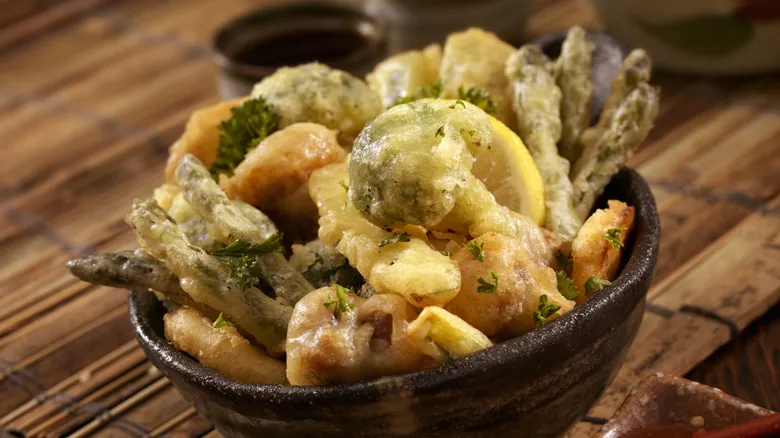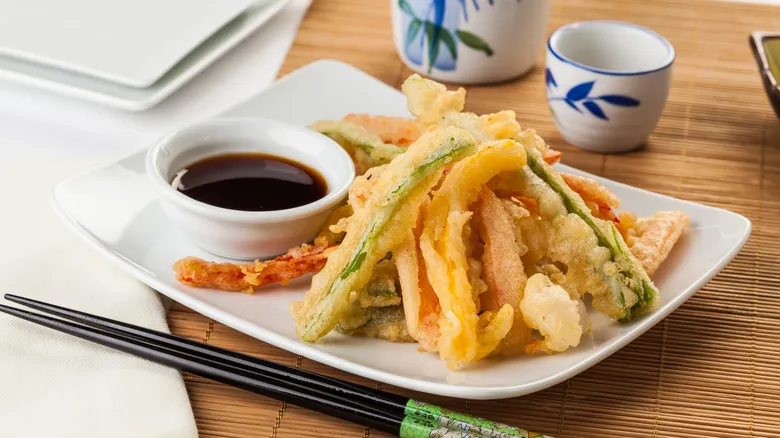The history of veggie tempura

Food historians largely concur that the technique of frying foods in hot oil was brought to Japan by Portuguese traders in the 16th century. During Lent and other fasting periods observed by the Catholic Church, the Portuguese would transform vegetables into small fish-like shapes and deep fry them in a light batter as a meat alternative. When trade began between the two countries in the mid-1500s, the Japanese adopted this deep-frying method from the Portuguese and developed it into what we now know as tempura.
The Japanese refined deep frying into a true culinary art, featuring finely sliced vegetables and shiso leaves that appear almost suspended in time. Bursting with flavor and visual appeal, low-moisture vegetables, along with proteins like shrimp and tofu, are enveloped in a light batter made from flour, egg, and cold water (or even club soda for an extra crispy texture), then fried to perfection and served with a rich dipping sauce called tentsuyu, crafted from dashi, mirin, and soy sauce. Even centuries later, it remains one of the most delightful ways to enjoy vegetables!
Recommended

How Highways Fueled The Rise Of Fast Food Across America

What Separates Cal-Mex From Tex-Mex Cuisine?

Superman Ice Cream Is A Mashup Of Mystery Flavors And A Midwestern Staple

Got Milk? The History Of Dairy's Most Notorious Marketing Campaign
Next up

